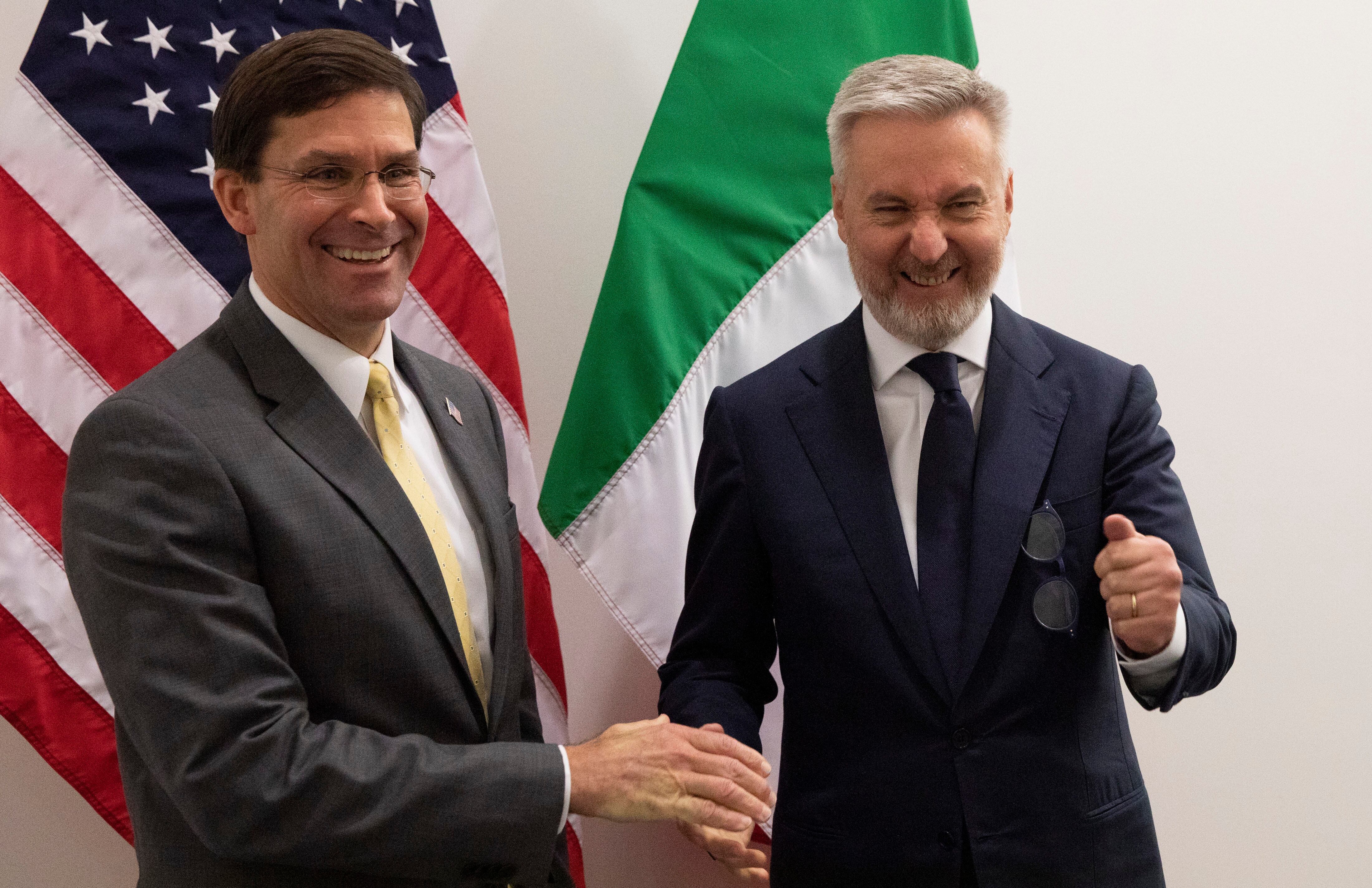ROME — In mid-May, Libyans standing on a beach in the west of the country reportedly watched a Turkish frigate off the coast fire a missile, which downed a drone operated by the United Arab Emirates.
The incident has not been confirmed but is consistent with Turkey’s bold use of naval power in recent weeks as it takes a central role in a proxy war in Libya that has sucked in regional players from Russia and Egypt to Qatar and France.
So far, Turkey’s foes in Libya appear to be impressed by its show of strength.
“In recent days there have been no reports of UAE drone flights against Turkish backed targets,” said Jalel Harchaoui, an analyst at the Clingendael Institute in the Netherlands.
Turkey’s stance in Libya shows how the Mediterranean has turned in a few years from a backwater on the fringes of Middle East turmoil to a major flash point. As Libya burns, tensions are also rising over new gas fields in the Mediterranean and Russia is re-entering the fray.
The result is a new round of naval rearmament.
“Tension is escalating and I see procurement following suit,” said Sidharth Kaushal, a sea power research fellow at the Royal United Services Institute in London.
Turkish navy ships have been a constant presence off the Libyan coast since Turkish leader Recep Tayyip Erdogan sided with the U.N.-recognized Libyan government in Tripoli in its defense of the capital against an attack by Libyan strongman Gen. Khalifar Haftar.
RELATED

This spring, Tripoli forces backed by Syrian fighters sent in by Turkey rebuffed Haftar, despite the general receiving backing from Russian mercenaries, the UAE, Egypt and France.
To help ensure the victory, Turkish vessels are thought to have given sensor support to Turkish drones as they attacked Haftar and destroyed Russian Pantsir air defense systems backing him.
Turkey sails ex-Oliver Hazard Perry-class vessels it acquired second-hand from the U.S. Navy which fire surface to air missiles, and is also eyeing new frigates, said Kaushal. “They might build their own hull but would shop abroad for electronics and sensors, rather like China did in the early 2000′s,” he said.
Vessels that Turkey has already deployed in the Mediterranean have been also been busy escorting cargo ships to Libya allegedly loaded with arms and supplies for fighters in Tripoli.
One such cargo ship was reportedly confronted on June 10 by a European Union task force set up to stop violations of an international arms embargo on Libya, only for the Turkish frigates escorting the vessel to turn back the EU force.
What makes the new tension in the Mediterranean so confusing is how old rules and alliances have been blurred. Turkey’s alleged violation of the arms embargo came weeks after its vessels had joined partner navies for a NATO exercise off the Algerian coast.
Turkey has meanwhile been accused of threatening Cyprus’ rights to undersea gas deposits with its own plans to drill in the Mediterranean, sparking a show-of-force naval exercise by Turkey’s NATO allies France and Italy to tamp down Turkey’s aggression.
Turkey’s behavior has also rattled Egypt, said analyst Harchaoui, despite Cairo’s own recent spending spree on naval assets from France, including two Mistral amphibious vessels purchased after Paris opted not to sell them to Russia, four Gowind corvettes and a FREMM frigate.
Italy, which has also built FREMMs in a joint program with France, is now in talks to sell two of the vessels to Egypt. The ships are ready, since they were originally built for the Italian navy, which will now have to wait for the construction of two more ships by Italy’s Fincantieri to fill its own quota.
At the eastern end of the Mediterranean, Russia is meanwhile renewing its Black Sea fleet and looking to leverage its access to Syria’s Tartus port to increase its naval clout in the Mediterranean as it seeks to become a player in the region, said Kaushal.
“Russia wants to be able to arm all its vessels with its Kalibr cruise missile, which has previously fired 2,000 kilometers from the Caspian into Syria,” he said. “It is a very cheap way to build up power projection. Putting this type of missile on low-cost vessels is the future, Russia is setting the trend by making minimal resources go a long way, and France and Italy, as well as Greece and Turkey may follow suit,” he said.
“Russia also has the P-800 Oniks supersonic anti-ship missile, which reaches 400 kilometers to 600 kilometers — and there is no Western equivalent,” he added.
The build up of lethal naval hardware in the Mediterranean is also going on under the sea, with submarines returning to the area in numbers.
“It is not impossible that Turkey would send submarines to Libya,” said Harchaoui.
RELATED

Last year Algeria test fired a Kalibr missile from one of its Kilo-class Russian submarines, while in April, Egypt took delivery of the third of four German HDW Class 209 subs it has ordered. Germany has also supplied Turkey and Greece, which operate 12 and 11 subs respectively.
“There are 20-30 submarines deployable in the Mediterranean now, a higher number than 10 years ago,” said Paolo Crippa, a defense analyst at the Cesi think tank in Rome.
The total number of subs operated by countries giving on to the Mediterranean is currently 63, he said.
It is therefore hardly surprising the Italian Navy is increasing its focus on anti-submarine capabilities. If it does hand over two of its FREMM vessels for the Egypt deal, it will likely order the two replacements with added anti-submarine capabilities.
Italy is meanwhile due to receive a new LHD vessel, the Trieste, which will host the navy’s F-35Bs, while local yard Fincantieri is also building new PPA vessels for the navy.
In a defense white paper drawn up in 2015, Italy said it aspired to be the top naval power in the Mediterranean. Five years on, in a much changed world, that ambition is increasingly under threat.
“In terms of number of vessels, Italy’s aim might be reasonable, but the political will to use a navy will always be key,” Kaushal said.
Tom Kington is the Italy correspondent for Defense News.







